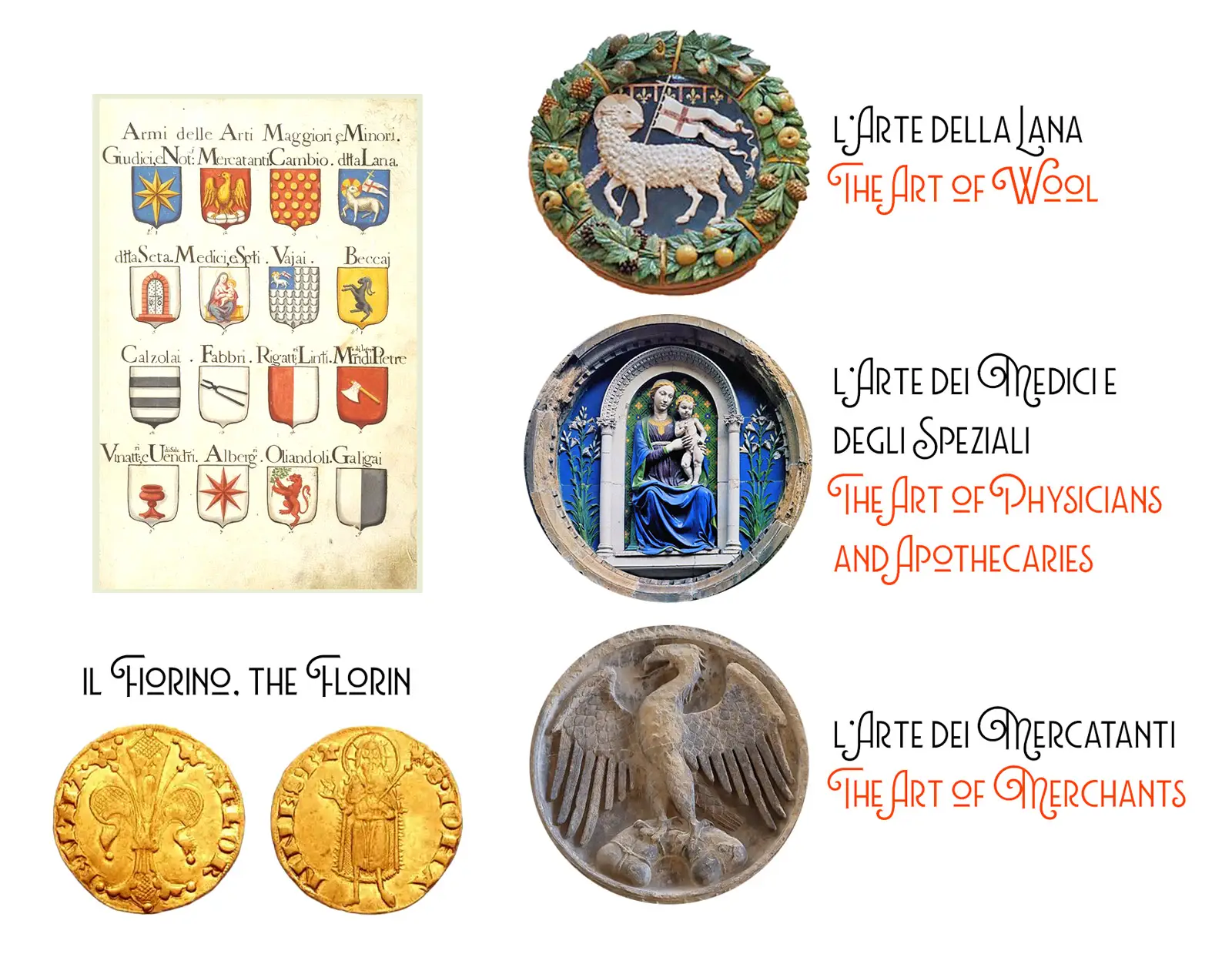In 1138 Florence became an autonomous Municipality, governed by a republican system based on the Arts and Corporations, the powerful associations of merchants and artisans. The city became rich thanks to trade and the textile industry, in particular with the processing of wool. However, the period was also marked by the struggles between the Guelphs (favorable to the Pope) and the Ghibellines (favorable to the Emperor), culminating in the definitive victory of the Guelphs at the end of the 13th century.
Florentine merchants were already beginning to enter the European trade circuit. Semi-finished cloths arrived from Flanders and France and alum for dyeing from the Levant: with these the Florentines refined and dyed the fabrics until they transformed them into precious fabrics that they resold abroad at significantly increased prices. Also starting at that time were the first banking activities that guaranteed large profits, although with some risks, not least that of accusations of usury by the Church.
Within the urban circle, the conflict between the dying feudal tradition and the new mercantile, manufacturing and banking bourgeoisie was becoming more acute, cultural rather than military in nature. The city buildings themselves, now characterized by very high towers (in reality, real city fortifications) documented a state of perpetual struggle. This is the Florence of the ancient circle of Cacciaguida, remembered by Dante.
